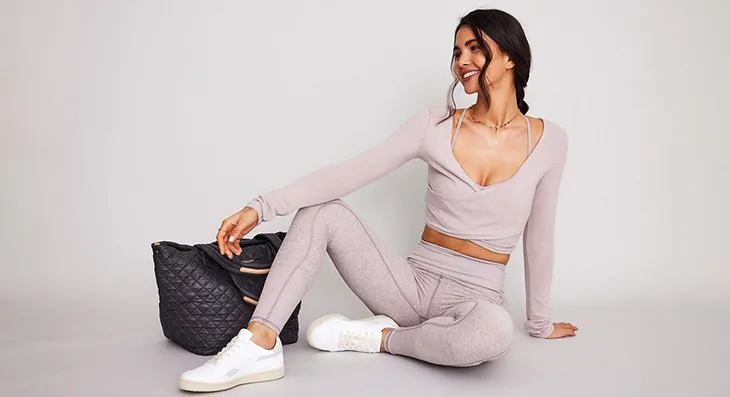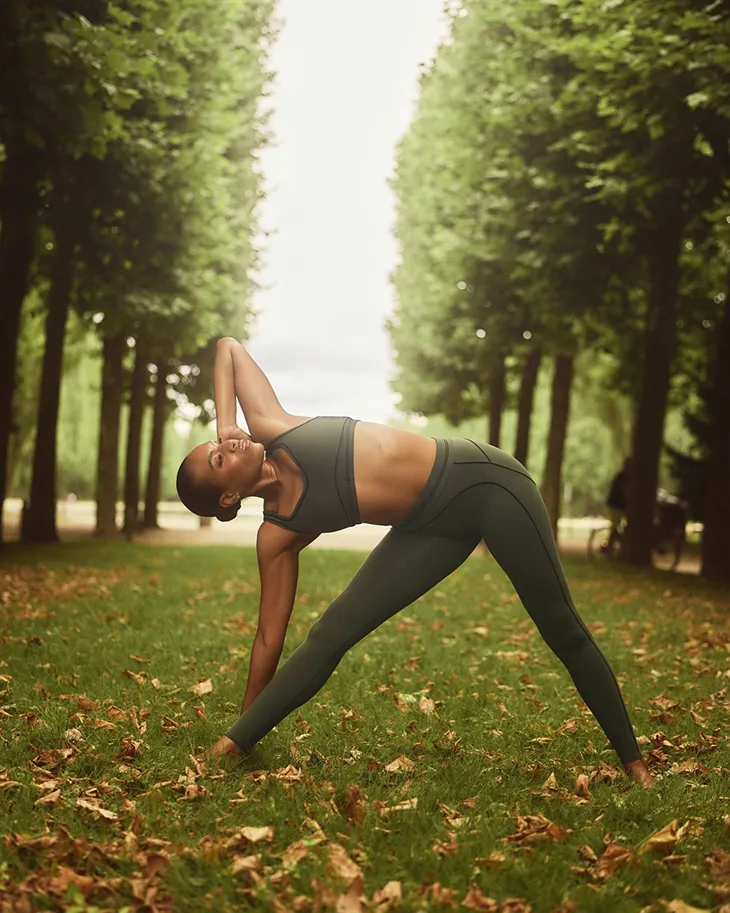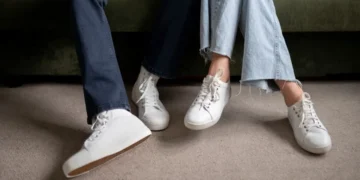
Over the last decade, yoga apparel has undergone a dramatic transformation, shifting from simple, stretch-based clothing to a refined category defined by technical innovation, movement-driven design, and lifestyle versatility. As yoga itself has grown into a global practice with countless styles, from power yoga, hot yoga, and vinyasa flows to yin, restorative, and hybrid fitness practices, the expectations of yoga clothing have risen accordingly. Practitioners no longer want garments that simply stretch. They want clothing that can support deep poses, withstand heat and sweat, stay in place through inversions, and blend seamlessly into everyday wear.
Modern yoga apparel sits at the intersection of science, engineering, and intentional movement, creating pieces that prioritize comfort, performance, and longevity.
The Evolution of Yoga Apparel
Yoga apparel was once designed with a single idea in mind: flexibility. Early yoga clothing relied heavily on cotton blends or basic spandex fabrics that stretched easily but often lacked durability, breathability, and moisture control. As yoga gained traction in fitness culture, its apparel needed to evolve in step with the practice.
Today, modern yoga clothing reflects the needs of practitioners who engage in a wide variety of movements, from deep hip openers to shoulder-intensive arm balances and dynamic flows that require seamless transitions. Clothing must feel soft during stillness yet secure during movement, warm enough for slow practices but breathable enough for intense sessions. This shift has led to the development of performance fabrics, ergonomic fits, and studio-to-street versatility that form the foundation of modern yoga wear.

The Importance of Fabric Innovation
The biggest advancement in yoga apparel comes from improvements in fabric technology. More than style, it is the fabric that determines how comfortable, functional, and durable a piece of yoga clothing will be. Brands now engineer specialized materials designed to respond to movement, manage heat and moisture, and provide structural support. Most high-quality yoga apparel fits into one of three primary fabric categories.
1. Lightweight Compression Fabrics
Lightweight compression fabrics are crafted for yogis seeking support, stability, and a smooth, sculpted look. These materials offer a second-skin feel, meaning they conform to the body without restricting movement. Because they stay firmly in place, they are ideal for practitioners who enjoy faster or more athletic styles.
Compression fabrics excel in practices where stability is essential, such as power yoga, vinyasa, or functional flow, because they lock in place during transitions, inversions, and complex balancing poses. They are also designed to help wick away sweat, maintain their structure through deep bends, and create a flattering silhouette.
Many brands now produce their own versions of these fabrics. For example, Alo Yoga uses a material called Airlift, which is known for its lightweight compression and smooth, polished finish. While fabric names differ across brands, the goal is consistent: to provide sculpted support that enhances performance.
2. Breathable Matte Performance Knits
Breathable matte performance fabrics prioritize airflow, lightweight comfort, and moisture regulation. These fabrics are ideal for hot environments and high-humidity classes such as hot yoga, heated vinyasa, or slow-burn flow practices. Their matte texture creates a more natural look, blending easily into casual attire outside the studio.
One of the biggest advantages of this fabric type is its ability to remain dry and comfortable even during intense sweating. Unlike shiny compression fabrics, matte performance knits feel soft and barely noticeable on the skin, allowing practitioners to focus fully on movement. Their airy, flexible construction makes them an excellent choice for long practice sessions or for individuals who prioritize comfort over compression.
3. Plush, Soft-Handled Fabrics
Soft-handled fabrics are designed for slow, grounding practices such as yin yoga, restorative yoga, and meditation. These materials feature a brushed, plush texture that provides gentle warmth and exceptional comfort.
Soft-handled fabrics offer subtle stretch without the firm, sculpting feel found in compression materials. They are perfect for practices involving long holds or slow transitions, where comfort is more important than stability. Their cozy feel also makes them ideal for everyday lounging or cool-weather sessions, blurring the lines between yoga clothing and loungewear.
These fabrics demonstrate how yoga apparel has expanded beyond the studio to become part of a broader lifestyle focused on comfort, mindfulness, and ease.
Construction Features That Support Movement
While fabric choice is essential, construction and fit determine how yoga apparel performs during practice. Every seam, waistband, and panel placement contributes to the garment’s overall function.
High, Supportive Waistbands
A secure waistband is crucial for maintaining confidence during forward folds, inversions, and twisting poses. High waistbands provide core support and prevent distractions caused by slipping or rolling fabric.
Flat or Bonded Seams
Yoga requires constant bending, stretching, and contact with the mat. Flat seams minimize friction and chafing, making movement more comfortable and reducing irritation during long sessions.
Four-Way Stretch
This feature allows fabric to stretch in every direction, accommodating deep lunges, splits, backbends, and spinal flexion without resisting or distorting.
Ergonomic Tailoring
Strategically placed seams and panels help clothing move with the body rather than against it. Ergonomic tailoring enhances alignment, reduces bunching, and supports natural posture.

Choosing the Right Apparel for Your Yoga Style
Different yoga styles demand different apparel characteristics. Matching your clothing to your practice style can significantly improve comfort and performance.
For Fast or Strength-Based Practices
Vinyasa, power yoga, and sculpt sessions benefit from clothing that offers:
- Light compression for stability
- Moisture control for heat buildup
- Secure fit for inversions
- Smooth finishes for fluid transitions
These features help maintain rhythm and alignment during challenging flows.
For Hot Yoga
Hot yoga requires materials that are:
- Extremely breathable
- Lightweight
- Quick-drying
- Sweat-resistant
These properties help prevent overheating and allow practitioners to remain focused.
For Yin or Restorative Practices
Slow practices require:
- Soft, cozy fabrics
- Relaxed silhouettes
- Warm layers
Comfort is the priority since practitioners may remain in poses for several minutes at a time.
The Role of Color in Yoga Apparel
Color has become an essential part of modern yoga wear, influencing mood, styling, and energy. Today’s palettes balance natural earth tones with cooling neutrals and modern accents. Below are three standout shades that have become favorites for practitioners who want expression without sacrificing performance.
Winter Frost: The Cool-Toned Essential for Modern Minimalism
Winter Frost, a pale icy blue, embodies clarity, calm, and elevated simplicity. This refreshing shade brings subtle sophistication to yoga apparel while supporting a cooling mindset.
Why It Works for Practice
- Helps reflect heat, beneficial for high-sweat or heated classes
- Evokes calmness, ideal for early-morning or meditative sessions
- Creates a sleek, tonal look for minimalists
Best Fabric Pairings
- Breathable performance knits for heat regulation
- Light compression for cooling support
- Soft brushed layers for winter practice
Winter Frost pairs beautifully with whites, silver-grays, and soft neutrals, perfect for creating clean, monochromatic outfits.
Brownstone: A Warm, Grounded Neutral with Everyday Appeal
Brownstone is a rich, earthy tone that captures warmth, stability, and natural elegance. It’s one of the most versatile colors in yoga apparel, easy to integrate into both practice and lifestyle outfits.
Why Practitioners Love It
- Perfect for grounding practices like yin, stretching, and meditation
- Easily blends into neutral wardrobes
- Works beautifully in cooler seasons or outdoor practice
Best Fabric Pairings
- Soft-handled, cozy materials for warmth
- Structured compression fabrics for sculpting support
- Matte knits for lifestyle versatility
Brownstone complements cream, camel, charcoal, forest green, and black, making it a wardrobe-friendly year-round neutral.
Clover Green: A Nature-Inspired Tone for Energized Movement
Clover Green merges organic calm with modern boldness. It’s rich yet wearable, striking yet grounded, an excellent choice for those who want something earthy but elevated.
Why It’s a Favorite
- Enhances presence during active flows and strength-focused classes
- Ideal for outdoor practice, blending harmoniously with nature
- Stylish in everyday outfits and travel wear
Best Fabric Pairings
- Lightweight compression for sculpted stability
- Airy matte knits for balanced breathability
- Cozy brushed fabrics for cool-weather comfort
Pair Clover Green with browns, creams, charcoal, or muted rose tones for a contemporary, nature-inspired palette.

The Lifestyle Evolution of Yoga Apparel
One of the most significant transformations in yoga wear is its ability to transition seamlessly into everyday life. Clean lines, muted colors, and minimalist designs allow yoga clothing to function beyond the studio.
This “studio-to-street” versatility has made yoga apparel a staple for:
- Running errands
- Traveling
- Working from home
- Casual activities
- Low-intensity fitness
As wellness culture continues to influence fashion, yoga wear has become symbolic of modern comfort and conscious living.
Sustainability in Yoga Apparel
Today’s consumers expect brands to prioritize sustainability, and many yoga companies now embrace environmentally responsible practices. This includes the use of:
- Recycled fibers, such as recycled polyester
- Low-impact dyes
- Water-saving production techniques
- Ethical manufacturing standards
- Durable fabrics designed to last longer
Sustainability gives yoga apparel deeper meaning by aligning with values of mindfulness and responsibility.
Yoga Accessories That Support Practice
In addition to clothing, modern yoga practice benefits from supportive accessories. Yoga mats provide essential grip and cushioning. Blocks, bolsters, and straps help practitioners deepen poses, improve alignment, and increase accessibility. Towels support hygienic practice and prevent slipping during intense or heated sessions. Together, these accessories complement apparel to create a complete, supportive yoga environment.
The Future of Yoga Apparel
The future of yoga apparel is rooted in both technological innovation and environmental awareness. Brands are already exploring:
- Biodegradable fabrics
- Temperature-responsive textiles
- Enhanced stretch science
- Digital body mapping for custom fit
- Plant-based fibers
As the wellness industry evolves, yoga apparel will continue to push boundaries in comfort, sustainability, and design.
Finally, modern yoga apparel represents a thoughtful blend of fabric engineering, functional construction, and lifestyle versatility. By understanding the unique qualities of compression fabrics, breathable knits, and soft-handled materials, as well as appreciating features like flat seams, secure waistbands, and ergonomic patterning, practitioners can choose apparel that truly supports their practice.
Across the industry, including examples like Alo Yoga, brands are redefining what yoga clothing can achieve, creating garments that prioritize comfort, movement, and mindful living. As innovation and sustainability continue to expand, yoga apparel will evolve alongside the practice itself, supporting practitioners with confidence, intention, and ease, whether on the mat or throughout everyday life.
Disclaimer: This article may contain affiliate links, and we may earn a commission if you make a purchase through these links.



















